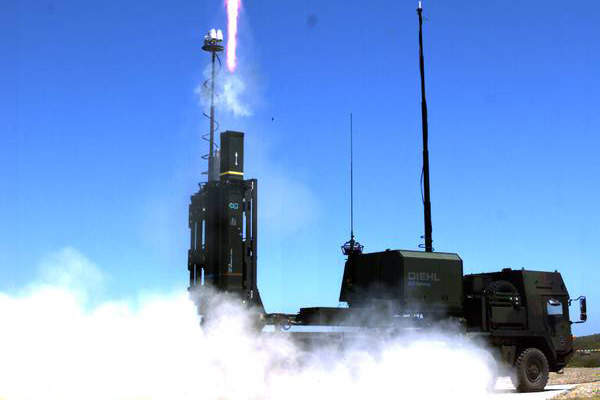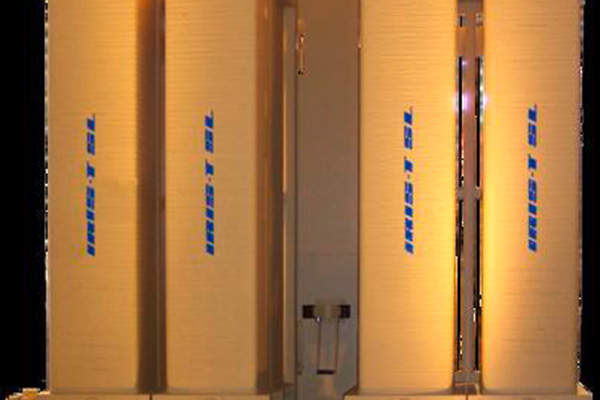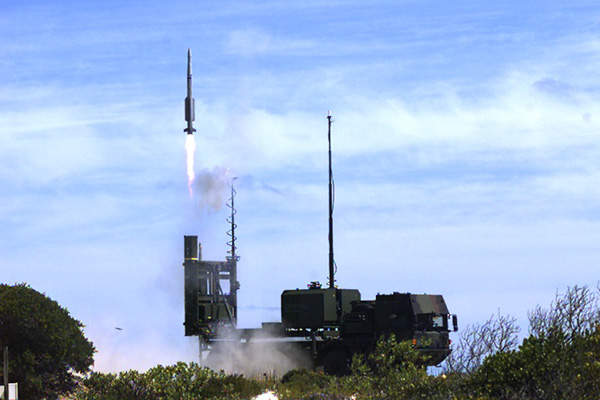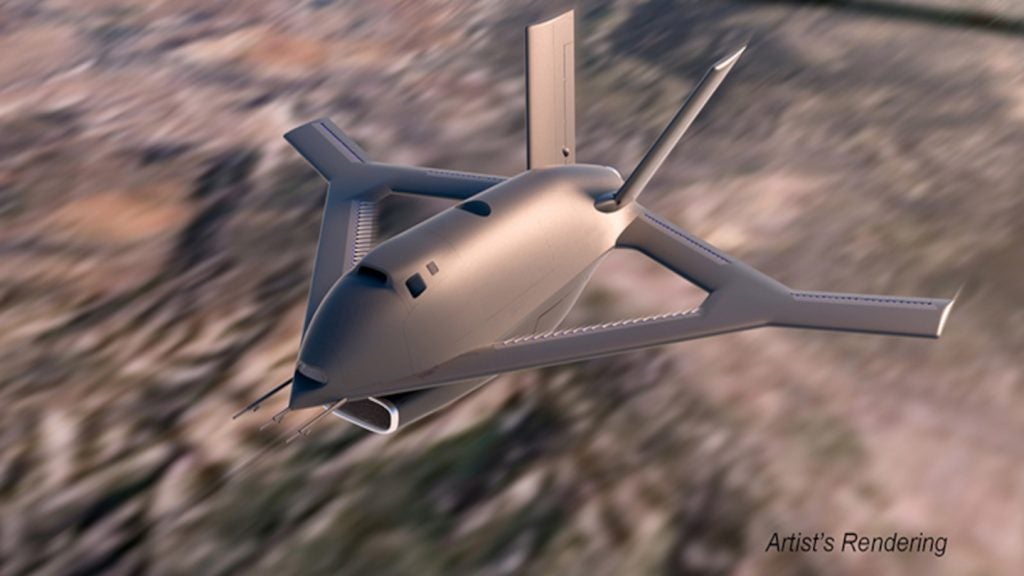The IRIS-T SL (Surface Launched) is a new, mobile, medium-range surface-to-air guided missile designed and developed by Diehl BGT Defence to meet future medium-range air defence needs of the German Air Force.
The new missile is effective against all types of aircraft, helicopters, cruise missiles, guided weapons, air-to-surface missiles, anti-ship missiles, anti-radar rockets and large-calibre rockets. It also has high probability of kill against unmanned aerial vehicles, unmanned combat aerial vehicles and other small manoeuvring threats at very-short and medium-range distances.
IRIS-T SL is an advanced version of the IRIS-T air-to-air guided missile, which entered service in December 2005.
Diehl BGT Defence was contracted by the Federal Office of Equipment, Information Technology and Utilization of the Bundeswehr (BAAINBw) for the development of a new IRIS-T SL guided missile with a launcher vehicle to provide tactical air defence for the German Armed Forces in 2007.
IRIS-T SL missile development and testing
Diehl BGT Defence selected Nammo for the development of an upgraded rocket motor for the IRIS-T SL missile in 2007. INTRACOM Defense Electronics (IDE) designed new-generation software defined data link for the missile. SENER was contracted to develop and produce the control section in September 2008.
Diehl BGT Defence awarded a contract to Ultra Electronics Precision Air Systems for the development of the high-pressure pure air generator (HiPPAG) and solenoid valves for the guided missile in April 2009. The HiPPAG system is used as a cooling gas compressor unit, while the solenoid valves are used for gas distribution to the IR detectors.
The IRIS-T SL guided missile performed its first ballistic test firing at the Overberg Test Range in South Africa in October 2009.
Diehl BGT Defence conducted two test firings of the missile and demonstrated its mechanical and aerodynamic capabilities as well as operational performance at the Overberg Test Range in May 2011. The first prototype of the IRIS-T SL missile was test fired against a drone in December 2012.
The missile was fired against Do-DT25 low-flying targets during two test firings conducted at the Overberg test range in November 2013.
The missile was test fired from IRIS-T SLM ground based air defence system at the Overberg test range in January 2014. The guided missile qualification was completed in January 2015.
The missile was qualified by Bundeswehr´s Tactical Air and Missile Defence System (TLVS) for in-service use in 2017.
The missile system is also selected by the Norwegian Army and Swedish Army.
IRIS-T SL missile design and features
The vertical-launched, light-weight, interoperable IRIS-T SL missile can be launched by the IRIS-T SLM/SLS missile launchers.
It can also be integrated with the existing and future air defence systems of allied forces using a plug and fight data interface. The missile features enhanced manoeuvring capability and high agility. It can engage multiple targets simultaneously.
The guided missile is stored in a fibre glass-fortified canister, which is also used for transport and launch. The IRIS-T SL launcher vehicle can deploy up to eight missiles.
The missile has a pre-fragmented warhead and offers 360° defence against air attacks in homeland defence or international missions. The missile is propelled by an advanced rocket motor fitted with an integrated thrust vector control system. It is equipped with an aerodynamic hood to achieve extended range of about 40km. It can engage targets flying at an altitude of around 20km.
Guidance and navigation
The IRIS-T SL missile is equipped with a global positioning system (GPS) / inertial navigation system (INS) technology for autonomous navigation.
A radiofrequency (RF) data link is incorporated to transmit virtual target data from an external radar to the missile during the flight. A high-precision passive infrared seeker is incorporated to provide missile guidance, increased countermeasure resistance and high target accuracy.
Control section of the IRIS-T SL missile
The rear part of the IRIS-T SL surface-to-air missile is equipped with a lightweight control section to control the missile flight path by vectorising the thrust and moving the aerodynamic control surfaces based on the commands from the guidance section. The independent fins are driven by four independent actuators.
The compact design of the control section incorporates motor drivers, four independent fin lock devices, close loop position control, power conversion and self-test capability. It offers enhanced position accuracy and high reliability. The control section also has high torque capability.











